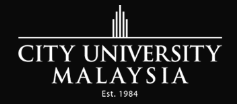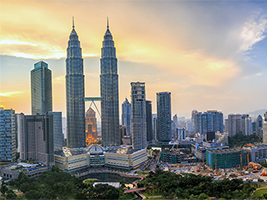A Glance At The Malaysian Education System
by StudyMalaysia.com on May 12, 2022 | Higher Education in Malaysia, The National Education System

Introduction to the Malaysian Education Structure (Lower and Higher Education)
Children in Malaysia begin their education as early as at the age of four at pre-schools although this is not compulsory. Primary education starts when the child reaches the age of six on the first day of January of the current school year. Prior to 2015, only the six years of primary education were compulsory but after 2015 the five years of secondary education were also made compulsory. The government provides free education for six years at primary level and five years at secondary level. At the end of this secondary education, students sit for a common public examination, Sijil Pelajaran Malaysia (SPM).
Students who want to pursue higher education after the secondary level need to have the required academic grades and the funds to further their education. School leavers with SPM qualifications can opt to obtain a pre-university qualification (such as the sixth form, matriculation programmes or the GCE 'A' levels) or study for a certificate or diploma at a higher educational institution. The time needed to complete a pre-university programme depends on the type of programmes - students usually take a year to complete a matriculation programme or STAM and one-and-a-half to two years for STPM and A-levels.
At the higher education phase, study opportunities include certificate, diploma, undergraduate, as well as postgraduate studies. Undergraduate studies consist of bachelor degrees and professional qualifications while postgraduate studies offer master degrees and PhDs. Generally, higher education at the diploma level is for school leavers with a secondary school certificate such as SPM (usually age 17 onwards) while bachelor degrees require post-secondary qualifications such as STPM or GCE A Levels or other equivalent pre-university qualifications (usually age 19 onwards).
Malaysia welcomes international students for all levels of education. Since the mid 1990s, international students have been coming to Malaysia to pursue international school education and tertiary education at the various higher educational institutions in Malaysia.
Education Governing Authorities
 Generally, the Malaysian education structure can be divided into pre-tertiary and higher education levels under the Ministry of Education Malaysia (MOE). The governance of higher education was separated from the MOE on 27 March 2004 and Ministry of Higher Education (MOHE) was established as a full ministry under a Federal Minister. There were then two governing authorities in education: the pre-tertiary education sector (from pre-school to secondary education and teacher education) was placed under the jurisdiction of the Ministry of Education (MOE), while the higher education sector came under the Ministry of Higher Education (MOHE) until 2013.
Generally, the Malaysian education structure can be divided into pre-tertiary and higher education levels under the Ministry of Education Malaysia (MOE). The governance of higher education was separated from the MOE on 27 March 2004 and Ministry of Higher Education (MOHE) was established as a full ministry under a Federal Minister. There were then two governing authorities in education: the pre-tertiary education sector (from pre-school to secondary education and teacher education) was placed under the jurisdiction of the Ministry of Education (MOE), while the higher education sector came under the Ministry of Higher Education (MOHE) until 2013.
The Ministry of Education Malaysia (or Kementerian Pendidikan Malaysia in Malay). However in 2015, the two Ministries were split again and were merged again in 2018. In 2020 the two ministries once again split with the higher education ministry under a new federal minister.
Levels of Education
Similar to many developed countries in the world, Malaysia adopts a system of 6+5+2 years of formal education. The following section provides details of the various levels of the national education system.
| Levels of Education |
|---|
| Pre-school and kindergarten education for children age 4 to 6 |
| Primary education from age 6+ to 11+ (Standard 1 to 6 for six years) |
Secondary education from age 12+ to 16+ (Form 1 to 5 for five years)
|
Post-secondary education or pre-university from age 17+ (for one to two years)
|
Higher Education
|
Categories of Educational Institutions
The Malaysian education system has been shaped to reflect the needs and identity of a multicultural society. There are at least eight broad categories of educational institutions (which include both government or public-funded institutions and private institutions) to meet the needs of its people and the international community.
At Pre-tertiary Level
There are six categories of schools:
| Categories of Schools |
|---|
| Government and private sector kindergartens (that follow the national pre-school curriculum) |
| Government schools or public-funded national schools (that follow the Malaysian national curriculum and national examination) |
Government-aided schools or national-type primary schools (that follow the Malaysian national
curriculum and national examination), which include:
|
| Private-funded schools (that follow the Malaysian national curriculum and national examination) |
| Independent Chinese secondary schools (that teach a 6-year curriculum developed by Dong Jiao Zong and prepare students for a standardised examination known as the United Examination Certificate at the end of Year 6 of secondary school; the medium of instruction is Chinese) |
| Foreign system schools such as international schools and expatriate schools |
At Higher Education Level
There are two categories of higher education institutions:
- Government-funded public universities, polytechnics, and community colleges
- Private higher educational institutions (i.e. institutions not funded by the government) which include:
- non-university status institutions such as private colleges
- university status institutions such as private universities and university colleges
- foreign university branch campuses e.g. Monash University Malaysia and The University of Nottingham Malaysia Campus (English is the medium of instruction at most private higher educational institutions.)
Education Legislations
The legal regulatory frameworks that govern the provision of education in Malaysia include :
- The Education Act 1996
- The Education Act 1996
- The Private Higher Educational Institutions Act 1996
- The National Council on Higher Education Institution Act 1996
- The Malaysian Qualifications Agency Act 2007 (replacing the previous Act namely, the National Accreditation Act Board 1996 which has been repealed)
- The Universities and University Colleges (Amendment) Act 1996
- The National Higher Education Fund Corporation Act 1997
- The MARA Institute of Technology (Amendment) Act 2000
- The National Higher Education Fund Corporation (Amendment) Act 2000
- The Private Higher Educational Institutions (Amendment) Act 2009
The Education Act 1996 covers pre-tertiary levels of education under the national education system which comprises preschool, primary, and secondary education as well as post-secondary education. The other six acts regulate the provision of higher education in Malaysia. The Private Higher Educational Institutions Act 2009 is currently under review for amendments to be made.
Academic Qualifications
Academic Qualifications at Pre-Tertiary Level (under MOE)
 Examinations and Qualifications
Examinations and Qualifications
The Examination Syndicate or Lembaga Peperiksaan (LP) under the Ministry of Education (MOE) conducts several national examinations. For more than three decades, at the end of the six years of primary schooling, pupils were required to sit for a common public examination called the Primary School Achievement Test / Ujian Penilaian Sekolah Rendah (PSAT / UPSR). However in April 2021, the Ministry of education announced the abolition of the UPSR starting from 2021. Education Minister Datuk Dr Mohd Radzi Md Jidin said Year Six pupils will be evaluated using school-based assessment, a system which has been in effect since 2011.
Prior to 2014, students sat for a public examination called Penilaian Menengah Rendah (PMR) or the Lower Secondary Assessment (LSA) at the end of the third year at the lower secondary level (Form 3). Subjects tested included Bahasa Malaysia, English, Mathematics, Science, Geography, History, Living Skills, Islamic Education (for Muslim students), and Moral Education (for non-Muslim students). A number of optional subjects were also available such as Mandarin, Tamil, and Arabic. Beginning 2014, the government decided to do away with the PMR as a public examination and replace it with a school-based assessment and the PT3. The Form Three Assessment (PT3) for 2021 was cancelled due to the pandemic. The Ministry of Education has yet to decide on the implementation of the PT3 examination for the 2022 session.
After two years of upper secondary education, students sit for the public common examination Sijil Pelajaran Malaysia, SPM (also known as the Malaysian Certificate of Education). The SPM is the national examination taken by all Form 5 students and is equivalent to the IGSCE or O level. Compulsory subjects include Bahasa Malaysia, English, Islamic Education (for Muslim students), Moral Studies (for non-Muslim students), History, Mathematics, and Science. Elective subjects are also offered across the fields of arts and health, information and communication technology, languages and literature, technical and vocational studies, science and mathematics, social sciences and religion.
Checkout the list of core subjects and electives (Subject packages you will choose in Form 4.
Along with Bahasa Malaysia, History has been made a must-pass subject in the SPM examination from 2013. English has also been made a compulsory pass subject beginning 2016. Candidates who fail any of these subjects will not receive a full SPM certificate.
In addition, the Ministry of Education offers two types of free post-secondary programmes or pre-university courses for students with SPM qualifications:
- The Sixth Form (lower and upper sixth form for one-and–a-half years) that prepares students for the common public examination Sijil Tinggi Persekolahan Malaysia (STPM)* which is equivalent to GCE A levels qualification, or Sijil Tinggi Agama Malaysia (STAM).
- Matriculation (for one year) conducted by matriculation colleges under the Ministry of Education which award successful candidates with the matriculation certificate.
Note*: In 2012, the Ministry of Education introduced a modular system to assess the Sijil Tinggi Persekolahan Malaysia (STPM) examinations. The system is based on three semesters (for a duration of 1.5 years) where students are evaluated at the end of each one. The assessment also includes coursework and school-based projects. The content of the STPM syllabus remains the same.
Academic Qualifications at the Higher Education Level (under MOHE)
The qualifications awarded by all higher educational institutions in Malaysia registered under laws related to Malaysian education are governed by the Malaysian Qualifications Framework (MQF). The Malaysian Qualifications Act 2007 provides for the establishment of the Malaysian Qualifications Agency (MQA) whose main role is to implement MQF. MQA is an agency under Ministry of Higher Education (MOHE).
The framework specifies that a programme is required to achieve the following minimum credits before an academic qualification can be awarded by the approved higher educational institutions, e.g. certificate (60 credits), diploma (90 credits), bachelor degree (120 credits), and taught master degree (40 credits). Master and doctoral degrees obtained by research do not have credit values.
Additional Information: MQA (Malaysian Qualifications Agency) and Higher Education Study Pathways.
The various levels of higher education qualifications based on MQF can be defined as follows:
| Malaysian Higher Education Qualifications, Education Levels and Minimum Number of Credits | ||
|---|---|---|
| Education Levels | Higher Education Qualification | Minimum Credit Required for the Award of Qualification |
| 8 | Doctoral | No given Credit Value |
| 7 | Research master degree | No given Credit value |
| Fully or partly taught master degree |
40 | |
| Postgraduate diploma | 30 | |
| Postgraduate certificate | 20 | |
| 6 | Bachelor degree | 120 |
| Graduate diploma | 60 |
|
| Graduate certificate | 30 | |
| 5 | Advanced diploma | 40 |
| 4 | Diploma | 90 |
| 3 | Certificate | 60 |
| 1-3 | Skills certificate | According to the skill and levels |
Source: MQA
Skills Qualifications under MOHR
Besides pursuing an academic pathway to higher education qualification from certificate to PhD levels, SPM qualification holders or youths aged 16 and above have the option to pursue skill-based programmes leading to the award of skills qualifications.
These programmes allow students a pathway to acquire skills qualifications which cover Level 1, Level 2 and Level 3 of the Malaysian Skills Certificate; Level 4 (Malaysian Skills Diploma); as well as Level 5 (Malaysian Skills Advance Diploma). Skill-based programmes are under the jurisdiction of the Department of Skills Development, Ministry of Human Resources (MOHR), and are provided for under the National Skills Development Act 2006. The providers of skills training are from various ministries, government agencies and private sectors.
Providers of Higher Education
Both public and private education providers play equally important roles in the provision of higher education to both Malaysian and international students. Together, the public and private sectors provide abundant study options. Higher educational institutions offer programmes that lead to the award of certificates, diplomas as well as postgraduate qualifications.
Categories of education providers
Higher education providers in Malaysia can be grouped into two major categories:
- Public higher educational institutions (government funded), which consist of:
- public universities (20)
- polytechnics 36)
- community colleges (104)
- Private higher educational institutions, which consist of:
- private universities (50)
- private university-colleges (34)
- foreign university branch campuses (10)
- private colleges (331)
List of higher education providers and courses offered
- List of universities in Malaysia
- List of private colleges in Malaysia
- Universities are able to award all levels of qualification, ranging from certificate to bachelor degree to master and Ph.D degrees. For private colleges, they award their own qualifications at diploma and certificate levels as well as conduct bachelor degree study mode under collaboration arrangement with foreign university partners such as 3+0 degrees, split-degrees, degree credit transfer programme. They also provide tutorial support for preparation of professional qualification examinations.
- List of course offered by featured private universities
- List of courses offered by featured foreign university branch campus
General Entry Requirements
The general entry requirements and duration of study at certificate, diploma, undergraduate and postgraduate levels for higher education (academic) can be grouped as below :
| Higher Education Qualification Levels, Its Entry Requirements and Duration of Study | |||
|---|---|---|---|
| Education Higher Education (Academic qualification levels) | Entry Requirements (Type of qualification required) | Estimated Age Group | Duration of Study |
| Certificate Level | For students with secondary school qualifications such as SPM | 17 and above | 1 to 1.5 years |
| Diploma Level | For students with secondary school qualifications such as SPM | 17 and above | 2 to 3 years |
| Bachelor's Degree Level | For students with post-secondary or pre-university qualifications such as STPM, GCE A-levels, etc. | 19 and above | 3 to 5 years |
| Master's Degree | For students with a bachelor's degree | Any adult | 1 to 3 years |
| PhD (Doctor of Philosophy) | For students with a master's degree | Any adult | 3 to 5 years |
(NOTE : The SPM (which is equivalent to GCSE 'O' levels) and STPM (which is equivalent to GCE 'A' levels) are the two recognised secondary and post-secondary qualifications awarded by the Malaysian government examination syndicate/board for further study in government-funded tertiary institutions. The above entry requirements do not include entry via APEL mode)
Rating of HEI
Currently there are two official rating systems for higher education institutions introduced by MOHE:
- For private colleges: MOHE launched a rating system for private colleges in 2011, aptly known as Malaysia Quality Evaluation System (MYQUEST) which is carried out by the Department of Higher Education, MOHE.
- For public and private universities as well as university colleges in Malaysia, the Rating System for Higher Education Institutions (SETARA) is carried out by the Malaysian Qualifications Agency (MQA).
The Way Forward for Private Higher Educational Institutions (2020-2025)
“As of 30th September 2019, there are a total of 1,325,699 students pursuing their tertiary education in Malaysia. This consist of 574,202 (49.7%) in public universities and 666,617 (50.3%) in PHEIs. The composition of international student in PHEIs and public universities are 92,415 (70%) and 39,099 (30%) respectively.”
“The private higher education sector has achieved much for the nation and its people. It is now an equal partner with the public institution as a provider of higher education. The achievements of private sector in the last two decades have been governed by the Private Higher Educational Institution Act 1996 (Act 555). The Act was described by the then Minister of Education as a “great milestone in the history of higher education in Malaysia” and part of a “major educational reform” that had never been undertaken by the government until that date. Liberalisation policies on higher education made it important to have more transparency and flexibility in the policies and regulations underlying and connected with the Act. This would support the competitiveness and quality of private higher educational institutions and bring them on par with those of developed countries.
Private education as an industry within the services sector has a great potential of growth to accelerate Malaysia’s aspiration for the services sector to contribute 70% of Gross Domestic Products (GDP). It has contributed RM 31.5 Billion from tuition fees and cost of living to the economy of Malaysia in 2018; and would potentially grow to RM 65 Billion by 2025 and RM 84 Billion by 2030 based on a mere conservative extrapolation of 5-6% growth rate per annum.
The above is extracted from the book published by Ministry of Education Malaysia - Way Forward for Private Higher Education Institutions: Education As An Industry (2020-2025). Download a copy here.
Conclusion
The well-structured higher education system in Malaysia is instrumental in enabling the government to achieve its aspirations to have a resilient nation, encourage the creation of a just society, maintain sustainable economic growth, develop global competitiveness, build a K-economy and innovative culture, strengthen human resource development and maintain sustainable environmental development.
The efforts of the government and education entrepreneurs to constantly enhance and improve the infrastructure of higher education, human resource development, and curricula in order to provide better quality higher education for students have earned the country international recognition. Malaysia has also been recognised for its success in the democratisation of higher education.
References:
- Education Guide Malaysia (12th Edition)
- Study in Malaysia Handbook (8th International Edition)
- "National Strategic Plan For Higher Education: Laying The Foundation Beyond 2020", by MOHE
- National Strategic Plan For Higher Education: Phase 1 & Phase 2
- 'The Way Forward' (2011), by Private Higher Education Management Sector
- jpt.moe.gov.my / Malaysia Higher Education Statistics 2011
- www.mqa.gov.my
- Way Forward for Private Higher Education Institutions: Education As An Industry (2020-2025)
Copyright © STUDYMALAYSIA (StudyMalaysia.com).
All rights reserved. No part of this editorial contents may be reproduced, copied, translated, or stored in a retrieval system or transmitted in any form or by any means without the written consent from the publisher.
You May Also Be Interested In...
A Glance At The Malaysian Education System
![A Glance At The Malaysian Education System - StudyMalaysia.com]() Children in Malaysia begin their education as early as at the age of f...
Children in Malaysia begin their education as early as at the age of f...MQA (Malaysian Qualifications Agency) and Higher Education Study Pathways
![MQA (Malaysian Qualifications Agency) and Higher Education Study Pathways - StudyMalaysia.com]() Learn about the role of the Malaysian Qualifications Agency (MQA), the...
Learn about the role of the Malaysian Qualifications Agency (MQA), the...�Malaysia
![�Malaysia - StudyMalaysia.com]() The government of Malaysia is committed in providing the best and the ...
The government of Malaysia is committed in providing the best and the ...Bachelor Degrees
![Bachelor Degrees - StudyMalaysia.com]() BA, Bsc, BEng, LLB – Hons or without – major, minor and specialisa...
BA, Bsc, BEng, LLB – Hons or without – major, minor and specialisa...Study Options after SACE
![Study Options after SACE - StudyMalaysia.com]() Congratulations to all students on your achievement in the South Austr...
Congratulations to all students on your achievement in the South Austr...Discovering study modes for a bachelor degree (home-grown and foreign degree)
![Discovering study modes for a bachelor degree (home-grown and foreign degree) - StudyMalaysia.com]() Both public and private higher educational institutions offer bachelor...
Both public and private higher educational institutions offer bachelor...






























